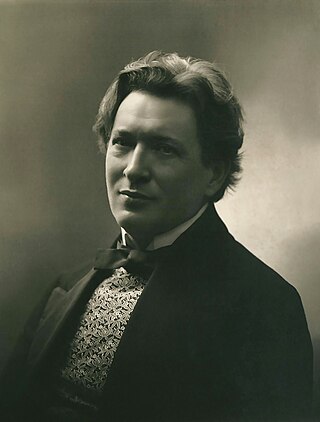
Ferruccio Busoni was an Italian composer, pianist, conductor, editor, writer, and teacher. His international career and reputation led him to work closely with many of the leading musicians, artists and literary figures of his time, and he was a sought-after keyboard instructor and a teacher of composition.

Sir Donald Francis Tovey was a British musical analyst, musicologist, writer on music, composer, conductor and pianist. He had been best known for his Essays in Musical Analysis and his editions of works by Bach and Beethoven, but since the 1990s his compositions have been recorded and performed with increasing frequency. The recordings have mostly been well received by reviewers.

Toccata is a virtuoso piece of music typically for a keyboard or plucked string instrument featuring fast-moving, lightly fingered or otherwise virtuosic passages or sections, with or without imitative or fugal interludes, generally emphasizing the dexterity of the performer's fingers. Less frequently, the name is applied to works for multiple instruments.

Charles-Valentin Alkan was a French composer and virtuoso pianist. At the height of his fame in the 1830s and 1840s he was, alongside his friends and colleagues Frédéric Chopin and Franz Liszt, among the leading pianists in Paris, a city in which he spent virtually his entire life.

Kaikhosru Shapurji Sorabji was an English composer, music critic, pianist and writer whose music, written over a period of seventy years, ranges from sets of miniatures to works lasting several hours. One of the most prolific 20th-century composers, he is best known for his piano pieces, notably nocturnes such as Gulistān and Villa Tasca, and large-scale, technically intricate compositions, which include seven symphonies for piano solo, four toccatas, Sequentia cyclica and 100 Transcendental Studies. He felt alienated from English society by reason of his homosexuality and mixed ancestry, and had a lifelong tendency to seclusion.
John Andrew Howard Ogdon was an English pianist and composer.

The Fantasy on Themes from Mozart's Figaro and Don Giovanni, S.697, is an operatic paraphrase for solo piano by Franz Liszt, based on themes from two different Mozart's operas: The Marriage of Figaro, K.492 and Don Giovanni, K.527.

Fantasia contrappuntistica(BV 256) is a solo piano piece composed by Ferruccio Busoni in 1910. Busoni created a number of versions of the work, including several for solo piano and one for two pianos. It has been arranged for organ and for orchestra under the composer's supervision.

Jonathan Powell is a British pianist and self-taught composer.
Geoffrey Douglas Madge is an Australian classical pianist and composer.

The Piano Concerto in C major, Op. 39 (BV 247), by Ferruccio Busoni, is one of the largest works ever written in this genre. Completed and premiered in 1904, it is about 70 minutes long and laid out in five movements played without a break; in the final movement a quiet men's chorus intones words from the verse-drama Aladdin by Adam Oehlenschläger.

Bernard Hélène Joseph van Dieren was a Dutch composer, critic, author, and writer on music, much of whose working life was spent in England.

The Bach-Busoni Editions are a series of publications by the Italian pianist-composer Ferruccio Busoni (1866–1924) containing primarily piano transcriptions of keyboard music by Johann Sebastian Bach. They also include performance suggestions, practice exercises, musical analysis, an essay on the art of transcribing Bach's organ music for piano, an analysis of the fugue from Beethoven's 'Hammerklavier' sonata, and other related material. The later editions also include free adaptations and original compositions by Busoni which are based on the music of Bach.
A piano symphony is a piece for solo piano in one or more movements. It is a symphonic genre by virtue of imitating orchestral tone colour, texture, and symphonic development.

Sequentia cyclica super "Dies irae" ex Missa pro defunctis, commonly known as Sequentia cyclica, is a piano composition by Kaikhosru Shapurji Sorabji. Written between 1948 and 1949, it is a set of 27 variations on the medieval sequence Dies irae and is widely considered one of Sorabji's greatest works. With a duration of about eight hours, it is one of the longest piano pieces of all time.
"Gulistān"—Nocturne for Piano, commonly known as Gulistan, is a piano piece by Kaikhosru Shapurji Sorabji written in 1940. Its title refers to Golestan, a collection of poems and stories by 13th-century Persian poet and writer Sa'di. The piece lasts about 30 minutes in performance and is often considered one of Sorabji's greatest works.











